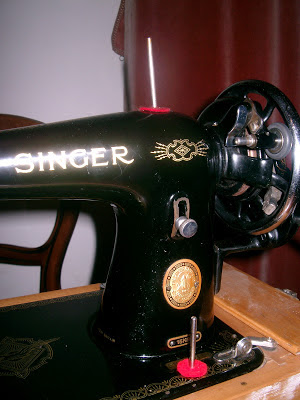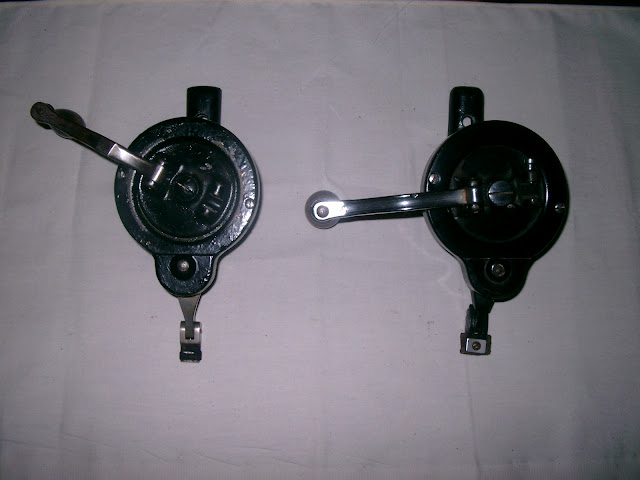After being cleaned and oiled I felt that the Singer 15K80 needed a work out so I ran these up.
 |
Liberty Boxer Shorts |
I picked the liberty print up at Fabric Galore in Battersea months ago. I had pre-washed, ironed and put it into the stash ages ago. I had even been so organised as to buy thread and elastic at the same time.
The pattern I used is fairly simple. It uses only two pattern pieces or rather the same pattern piece cut, flipped over and cut again. I managed to cut out and nearly finish the boxers last night and hemmed them while the dinner was cooking this evening. I have made this pattern once before (it was my first project when I started sewing after being given the 28K) so I had a fair idea of what I was doing.
From winding the bobbin with brownish red thread to finishing the hem the 'fifteen' performed faultlessly. The old machine seemed to run more smoothly and more quietly with every stitch and it feels like it has some serious piercing power. This fabric is probably 'dress weight' and as such maybe a shade heavy for boxers but two layers of it were as nothing to the 'fifteen'. There is one point in this project where I was sewing through (I think) nine layers of cotton (it can happen) and the machine never missed a beat.
As written the pattern suggests a zigzag and trim seam finish and even zigzagging the hem. That isn't possible on a straight stitch machine so I did some thinking and adapted it for flat felled seams. Neat and tidy for the inside of undies!
 |
Flat Felled Seam |
The elastic is encased in a tunnel waistband and the fly went together without too much bother. It's not quite ready to wear but I am happy with the result and I'm sure it will be fairly robust.
 |
Fly and Waistband inside view |
At one and a quarter inches the hem is much deeper than any of my shop bought boxers but they hang well and both legs are the same length!
And I've now got plenty of scraps to turn into log cabin blocks!
 |
Liberty Scraps |



























